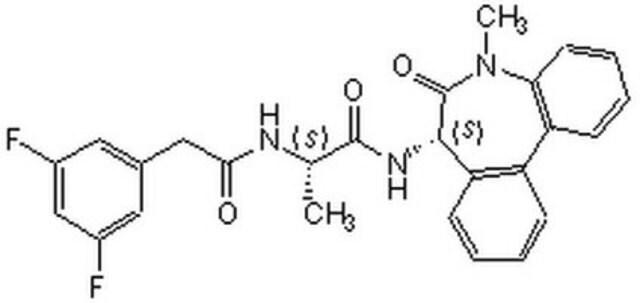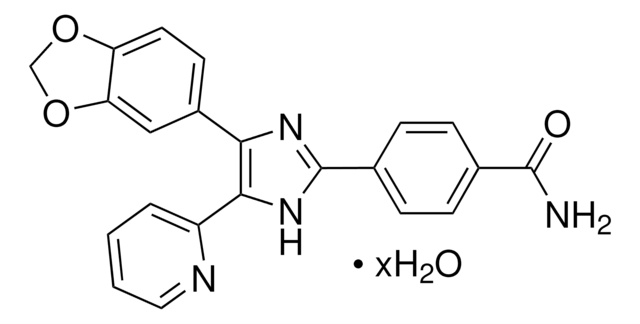616454
A 83-01
≥97% (HPLC), solid, TGF-β RI kinase inhibitor, Calbiochem
Synonym(s):
TGF-β RI Kinase Inhibitor IV, Transforming Growth Factor-β Type I Receptor Kinase Inhibitor IV, 3-(6-Methylpyridin-2-yl)-4-(4-quinolyl)-1-phenylthiocarbamoyl-1H-pyrazole, A-83-01, ALK5 Inhibitor IV
About This Item
Recommended Products
Product Name
TGF-β RI Kinase Inhibitor IV, TGF-β RI Kinase Inhibitor IV, CAS 909910-43-6, is a cell-permeable, selective inhibitor of ALK-4/5/7-mediated signaling (IC₅₀ = 45, 12, and 7.5 nM, respectively).
Quality Level
Assay
≥97% (HPLC)
form
solid
manufacturer/tradename
Calbiochem®
storage condition
OK to freeze
protect from light
color
pale yellow
solubility
DMSO: 20 mg/mL
shipped in
ambient
storage temp.
2-8°C
SMILES string
S=C([n]2nc(c(c2)c4c5c(ncc4)cccc5)c3nc(ccc3)C)Nc1ccccc1
InChI
1S/C25H19N5S/c1-17-8-7-13-23(27-17)24-21(19-14-15-26-22-12-6-5-11-20(19)22)16-30(29-24)25(31)28-18-9-3-2-4-10-18/h2-16H,1H3,(H,28,31)
InChI key
HIJMSZGHKQPPJS-UHFFFAOYSA-N
General description
Biochem/physiol Actions
ALK-4/5/7
Packaging
Warning
Reconstitution
Other Notes
Legal Information
Storage Class Code
11 - Combustible Solids
WGK
WGK 3
Certificates of Analysis (COA)
Search for Certificates of Analysis (COA) by entering the products Lot/Batch Number. Lot and Batch Numbers can be found on a product’s label following the words ‘Lot’ or ‘Batch’.
Already Own This Product?
Find documentation for the products that you have recently purchased in the Document Library.
Customers Also Viewed
Our team of scientists has experience in all areas of research including Life Science, Material Science, Chemical Synthesis, Chromatography, Analytical and many others.
Contact Technical Service







![[Leu15]-Gastrin I human ≥95% (HPLC)](/deepweb/assets/sigmaaldrich/product/structures/153/342/d4cb3dd7-13f1-46cf-8d1f-3907a5de7a83/640/d4cb3dd7-13f1-46cf-8d1f-3907a5de7a83.png)

